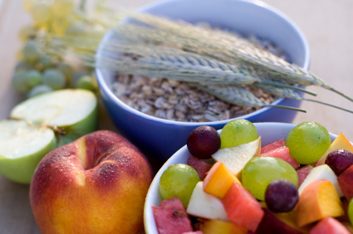
Are you eating enough fibre?
Most Canadians don’t eat enough fibre. According to the Canadian Heart and Stroke Foundation, adults need 21 to 38 grams per day, but the average Canadian consumes 14 grams daily.
We all know a high-fibre diet is healthy for us-it helps lower blood cholesterol levels, in turn reducing the risk of coronary heart disease; and it also promotes good digestive health (a polite way of saying, it helps prevent constipation and hemorrhoids). But many of us don’t go out of our way to include high-fibre foods in our diet. We think they’re boring, or hard to prepare. Wrong!
Try these 10 tips and you’ll find a high-fibre diet can be as deliciously easy as it is healthy.
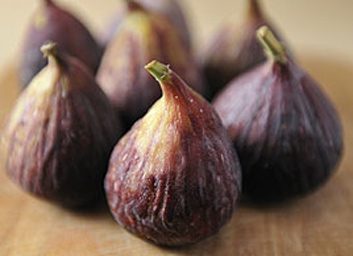
1. Discover an exotic fruit
Stop wondering what those unusual-looking fruits at the greengrocers are, and give one a try! Mary Bamford, a Toronto-based Registered Dietitian with the Newtopia nutrition and weight-loss clinic suggests these high-fibre winners:
• Kumquats: Five of these teensy citrus fruits that you eat peel and all, boast 6.2 g fibre.
• Guava: A sweet and sour tropical fruit, contains 4.7 g fibre per 1/2 cup serving.
• Asian pear: A medium-sized example of this crispy-crunchy fruit that tastes halfway between a mild apple and pear packs 4.4 g fibre.
• Figs: These Mediterranean delicacies are often sold fresh, boasting 2.9 g fibre per two raw fruits.
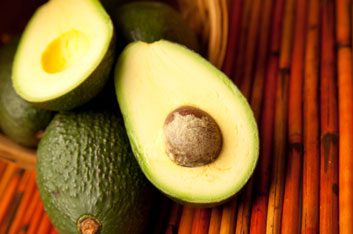
2. Make “guac and chips” your go-to appetizer
Need a quick and healthy appetizer? Enjoy a plate of baked whole-grain corn tortilla chips with guacamole and salsa. (Just hold off on the cheese and sour cream if you’re calorie-conscious.)
Guacamole is the dish’s MVP. “It’s so creamy and delicious, you don’t associate it with high fibre,” says Bamford. But guacamole is made from avocado, which boasts a whopping 8.5 g fibre per half fruit.
Just mash an avocado with a fork and add salt, pepper, lemon or lime juice to taste; optional add-ins also include diced tomato, onion or minced cilantro.
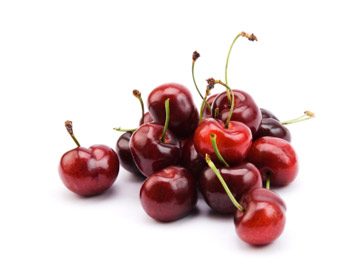
3. Harvest your own fibre-for fun!
Summer offers a treasure trove of luscious Canadian fruit. Take your family to a pick-your-own orchard. Kids go nuts for fruit they’ve collected themselves.
Bamford’s top choices include:
• Pears (5 g fibre per medium fruit)
• Raspberries (4.7 g fibre per 1/2 cup)
• Blackberries (4.7 g fibre per 1/2 cup)
• Cherries (2.9 g fibre per 20 cherries)
• Blueberries (2.6 g fibre per 1/2 cup)
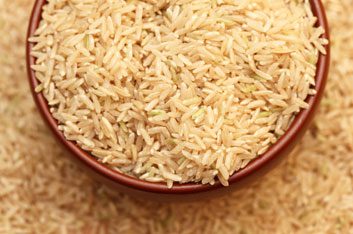
4. Trade white for brown
Switching from white, refined grain products to brown, whole-grain products is one of the easiest ways to double your fibre intake:
• Trade white rice for brown rice (2 g fibre versus 5.5 g fibre per 1/2 cup, pre-cooked).
• Swap white bread for brown (whole-wheat) versions (1.9 g fibre versus 6 g fibre per two slices).
• Trade refined cereals whole-wheat versions like Shredded Wheat (an average of 1 g fibre per 1 1/4 cup serving versus 4 g fibre per per 2/3 cup serving).
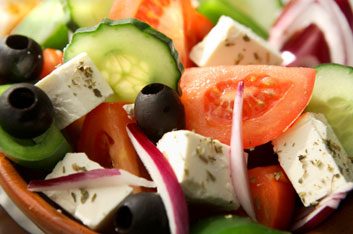
5. Upgrade your salad
Sliced apples, pear, Asian pear, avocado or orange can ramp up the fibre-and vitamin-content of your salad. Toss in even more fibre and flavour with nuts or chopped veggies.
Looking for some inspiration? Here are our best tips on how to make fantastic salads.
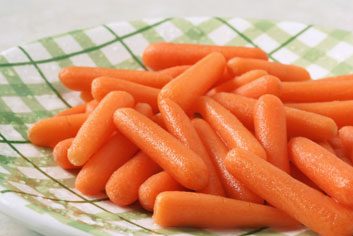
6. Try a healthier crunchy snack
Want something crunchy and salty? Try these-better than potato chips!:
• Carrot sticks with cottage cheese
• DIY nut mix: “Home-roast some nuts in chili powder, cumin or thyme with just a little added salt,” says Bamford. “Mix one tablespoon of salted peanuts with three tablespoons of unsalted peanuts. Add some raisins for a contrasting flavour,” and more fibre, says Bamford.
• Try baked kale chips, available at health food stores and some supermarkets.
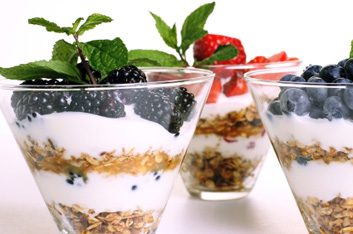
7. Indulge in a sweet-and healthy-treat
Hankering for something sweet? Try these-not a candy bar!:
• Bake your own fruit crumble, combining high-fibre apples and berries with rolled oats, whole-grain flour and psyllium, suggests Bamford. Here’s one healthy crumble recipe you can try.
• Layer sliced fruit with yogurt and top with nuts and/or granola for a yummy parfait.
• “Stewed rhubarb is a great spring treat,” says Bamford. “Top it with a whole grain oatmeal-raisin cookie.”
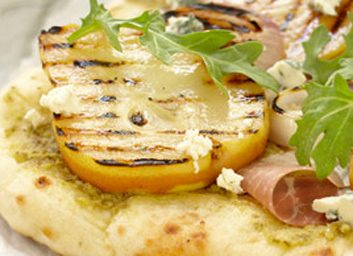
8. Try fruit a new way
Grilling brings out the sweetness of fruit. It also adds an element of novelty, so it’s less same-old-same-old. “Try pineapple rings, peach halves, or even strawberries-use two sticks for kebabs, to keep berries from spinning around. Brush on a little maple syrup or sweetened fruit juice if you like it extra sweet,” says Bamford. Hello, new favourite dessert!
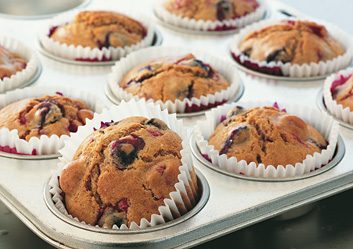
9. Bake your own muffins
Store-bought muffins can be surprisingly low in fibre and high in fat and calories, so bake your own treats using high-fibre cereal as a main ingredient. Look for recipes on cereal boxes or try one of our healthy muffin recipes.
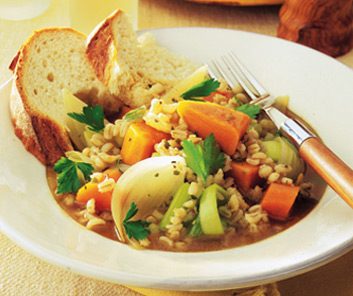
10. Squeeze in more veggies
Frozen vegetables make it a snap to include extra fibre and nutrients in any dish-even convenience foods-no washing or chopping required!
• Toss 1/2 cup of green peas into your ready-made pasta entrée.
• Add spinach to heat-and-serve sauces.
• Luxe-up 79-cent, three-minute ramen noodles by tossing in a cup of frozen Asian veggie mix with carrots, water chestnuts and sprouts, while it’s on the boil.
Related:
• 10 ways to sneak more veggies into your diet
• 6 foods you thought were healthy but aren’t
• 8 budget superfoods, plus recipes to try
